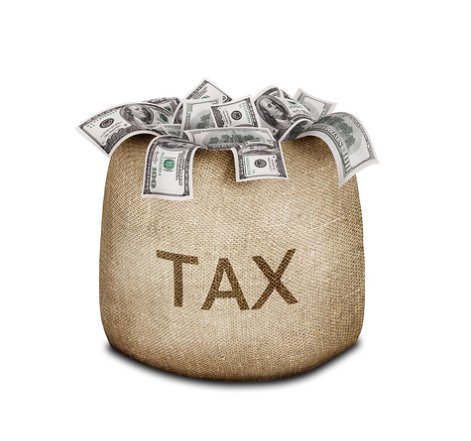2020, for all of its chaos and upheaval, ended up being a fantastic year for many investors, and particularly first-time investors. But now that we’ve entered tax season, a great many of them are finding that they have to pay taxes on the wild gains from their stocks.
The Wall Street Journal reported that more than 10 million new brokerage accounts were opened last year. It’s not hard to see why. When popular stocks like Tesla (TSLA) are rising by more than a factor of 10 since March, who wouldn’t want a piece of that action?

If the first month of 2021 is any indication, the party for individual investors may be just beginning. Americans are spending more time at home due to virus restrictions, they have a little more cash than usual in their pockets due to stimulus checks, interest rates are effectively pegged at zero and alternatives are sparse. With those conditions in place, we’re likely to see more new investors flocking to the market this year in my opinion.
Capital Gains
Let’s say you’re one of those new investors. You might be sitting pretty if you happened to catch some of the highfliers on their way up. But you should also know that if you earned those gains outside of a tax-advantaged account, such as a 401(k) or IRA, you’re likely going to have to pay taxes on your stock gains, known as capital gains taxes.
But first, a note: The IRS really isn’t out to get you. If they catch a mistake or a failure to report income, they’ll zing you. But if you’re honest and make a legitimate attempt to follow the rules, they’re not going to rake you over the coals.
With that out of the way, let’s go over three common questions:
If you sold any stocks, bonds, options or other investments in 2020, then you will need to report it on your tax return on Schedule D. TurboTax and other mainstream tax preparation software vendors will generally do this for you after asking you to input some data.
If you sold stocks at a profit, you will owe taxes on gains from your stocks. If you sold stocks at a loss, you might get to write off up to $3,000 of those losses. And if you earned dividends or interest, you will have to report those on your tax return as well.
However, if you bought securities but did not actually sell anything in 2020, you will not have to pay any “stock taxes.”
The Paperwork
If you sold any investments, your broker will be providing you with a 1099-B. This is the form you’ll use to fill in Schedule D on your tax return. The beauty of this is that it’s generally plug-and-play. Everything you need can be ripped right off of the 1099-B and inputted into the tax return.
Furthermore, if you received dividends from stocks or interest from bonds, you should also receive a 1099-DIV or a 1099-INT. Often, you’ll all of these forms in a single package from your broker, which is supposed to be sent to you no later than Jan. 31. (1099-Bs technically aren’t due to recipients until Feb. 15.)
Tax Brackets
Here’s where it gets tricky. The amount you owe in taxes on your stocks will depend on what tax bracket you’re in. Short-term capital gains are taxed as ordinary income, just like your paycheck.
We don’t need to go through every bracket here (you can see which bracket you’re in here), but for most investors, the rate is tolerably low. For example, a married couple filing jointly with taxable income of $80,251 to $171,050 will be in the 22% bracket. So, if that’s you, and you earned $1,000 in the stock market, you’ll be paying $220 in capital gains taxes.
If you sold stock that you owned for at least a year, you’ll benefit from the lower long-term capital gains tax rate. In 2020, a married couple filing jointly with taxable income of up to $80,000 pays nothing in long-term capital gains. Those with incomes from $80,000 to $496,600 pay 15%. And those with higher incomes pay 20%.
There’s also a 3.8% surtax on net investment income, which applies to single taxpayers with modified adjusted gross incomes (MAGI) over $200,000 and joint filers with MAGI over $250,000. Net investment income includes, among other things, taxable interest, dividends, gains, passive rents, annuities and royalties.
Software Support
The important thing to remember here is that most tax software – even the cheap ones – will generally do these calculations for you. You don’t have to remember any of this. You can just pull the numbers off the 1099-B, input them into your tax program, and voila, the program does the rest.
But perhaps it’s even more important to remember that paying taxes on your investment income isn’t the worst thing in the world. It means you made money.
And while it might be painful to part with 20% or more of your earnings as taxes, just remind yourself that the remaining 80% or so is still profit that you didn’t have before.
And remind yourself to set aside money for the tax man when you enjoy gains on your stocks in the years to come.
This post first appeared on March 1 at Kiplinger.com.
Photo Credit: 401(k) 2012 via Flickr Creative Commons
Disclosure: This article is not intended as tax advice and is provided for educational and information purposes. Interactive Advisors does not provide tax advice. All references to tax matters or information provided here are for illustrative purposes only and should not be considered tax advice and cannot be used for the purpose of avoiding tax penalties. Investors seeking tax advice should consult an independent tax advisor.



